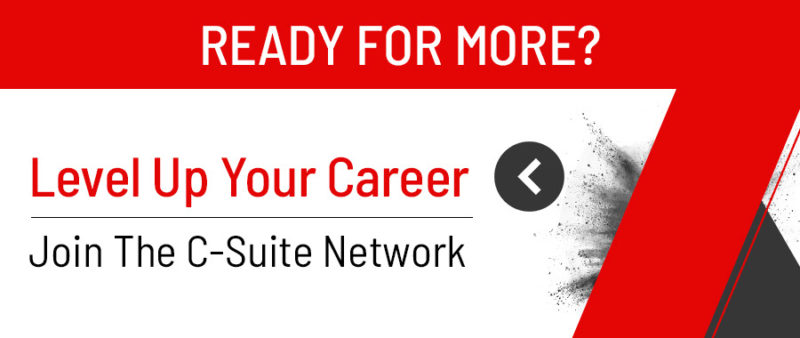

By Danna Olivo
How is the Great Resignation Driving Cultural Change in the Workplace?
How is the Great Resignation Driving Cultural Change in the Workplace? https://csuiteold.c-suitenetwork.com/advisors/wp-content/uploads/sites/5/2022/03/GreatResignation.jpg 847 565 Danna Olivo https://secure.gravatar.com/avatar/f65b1e2c7fa671a19a60db374451a1e3?s=96&d=mm&r=gEmployees have been caught in limbo during the past couple of years. In thinking about the next career path, they should take, some employees are considering relying on accumulated savings over the years rather than continuing in seemingly lifeless employment.
Publicists have coined this event the Great Resignation—mostly credited to the effects of the pandemic, droves of employees have considered (and might have chosen) to leave their jobs.
To understand how the Great Resignation came to be, we should focus on two important factors: care and burnout.
What is Driving the Great Resignation?
Even before the pandemic, employees are caught in a vicious cycle of outperforming each other. Employees are measured by nothing else but the amount of contribution they bring to the organization. If you have not hit your quota, you don’t have the “right” to take it easy and have a break. Employees are glorified for working 10-hour (or more!) workdays. This is not sustainable and has got to end at some point. When you’re working day in and day out with no end in sight, burnout is imminent.
This feeling of burnout was exacerbated by the lack of care some employers have shown their employees during the height of the pandemic. While some employers have been quick to deploy employee-friendly policies towards performance, attendance, and other factors, others maintained a rigid mindset. They dismissed the threat of the pandemic and continued to demand the same intensity from their employees without showing a little compassion and care.
These two factors came together and somewhat gave the employees the necessary jolt to finally proceed in leaving their posts.
Changes That We Can Expect in the Workplace Moving Forward
The Great Resignation may have been a wake-up call for employers to step up. Before the management and the employees may have existed on two separate planes but if there’s anything the Great Resignation and the pandemic have taught us is that our quality of life, safety, and health are far more important than our jobs, roles, and profits.
The pandemic has made us rethink how fleeting our lives are. Therefore, it will become normal for both employers and employees to find more fulfilling things to do.
You can expect that employers and employees will no longer face burnout and lack of care separately. With that, we can expect that these two groups will collaborate in making the working environment more conducive for growth and development for the employees and for the company to be recognized for having a “toxic-free” work culture.
Short-term fixes such as offering people more money or promotion will no longer make them stay. Even if they do, you’re just delaying the inevitable–short-term benefits have failed to turn demoralized employees into happy ones, time and time again.
Progressive cultural changes should start from the company. Take this opportunity to reset your organization’s purpose, find time to listen to your people, prioritize learning and development – give your employees a sense of purpose, and most importantly give a lot of importance to their well-being.
What’s Next?
According to the U.S. Bureau of Labor Statistics 4.5 million workers quit or changed their jobs in November of 2021. The percentage of “quit rate” – the percentage of those who voluntarily left their jobs – jumped back up to 3 percent. A March 2021 survey found that 54 percent of employees around the world would consider leaving their job if they were not provided some form of flexibility in where and when they work. The U.S. Census Bureau reported that 2021 saw a whopping 5.4 million new business applications, surpassing the 4.4 million in 2020. In 2019 there were 3.5 million applications reported. What do all these numbers represent?
Two things are blatantly clear…first, the tide has shifted from an EMPLOYER dominant workforce to an EMPLOYEE one. Secondly, the number of new inexperienced business owners has increased by more than 2 million applications. If given the opportunity and resources needed to survive the next 2-5 years, we could see a tremendous boost in our nation’s GDP as more money is pumped into our economy, not to mention our labor force. Or…we could see the downside of this economic surge as businesses follow the norm and fail within the next 3-5 years.
MarketAtomy LLC is committed to keeping this from happening by bringing the resources and education needed to prepare these new business owners for growing a successful small business. To find out more go to marketatomy.com or to our eLearning environment at marketatomy.academy.
Danna Olivo is a Growth Strategist, Author, and Public Speaker. As CEO of MarketAtomy LLC, her passion is working with first-stage business owners to ensure that they are prepared and equipped to launch and grow a successful small business. She understands the intricacies involved early on in business formation and as such the challenges that come with it. A graduate of the University of Central Florida’s College of Business, Danna brings more than 40 years of experience strategically working with small and medium businesses, helping them reach their growth goals. danna.olivo@marketatomy.com



